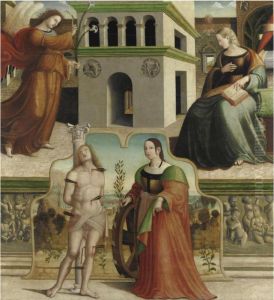Francesco Fantoni Paintings
Francesco Fantoni was an Italian sculptor and woodcarver who lived during the late Baroque period. Born in 1659 in Bergamo, a city with a rich artistic tradition in the Lombardy region of Italy, Fantoni was part of a family of artists. His father, Carlo Fantoni, was also a sculptor, which provided Francesco with an artistic environment from an early age. He was trained within this family workshop, which was a common practice for the period, enabling him to learn the techniques and styles that would later define his own work.
Fantoni's work is characterized by a dynamic and expressive style, typical of the Baroque era, which sought to invoke emotion and grandeur. He was particularly known for his skill in woodcarving, a medium through which he produced many religious sculptures and decorative items for churches. His works often featured intricate details and a sense of movement, as well as a keen attention to anatomical accuracy and emotional expression.
Throughout his career, Francesco Fantoni received commissions from various churches and patrons, mainly in the Lombardy region. His works contributed to the decoration of many ecclesiastical buildings, which was a major avenue for artistic work during this period. Some of his notable works include the wooden sculptures in the Basilica di Santa Maria Maggiore in Bergamo, which demonstrate his mastery of the medium and his ability to imbue wood with a sense of life and drama.
Fantoni's legacy is also tied to the continuation of the family workshop, as he was part of a lineage of artists—the Fantoni family workshop continued to be an influential force in the region's artistic production for several generations. Francesco Fantoni died in 1745, leaving behind a body of work that is still appreciated today for its craftsmanship and its embodiment of Baroque art's emotive power.
